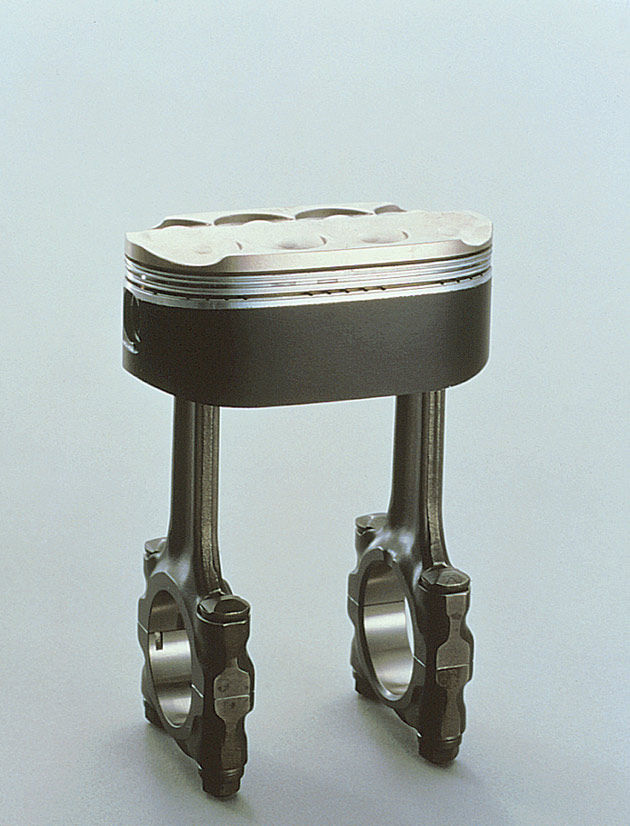1992 Honda NR750
With Phil Aynsley
Honda’s concept of an oval-pistoned engine (or more correctly, a bore/piston with straight sides and semicircular ends) began with the development of the 1979 NR500 GP machine. Honda had been out of Grand Prix racing for 12 years, and when they returned they wanted to showcase four-stroke technology.
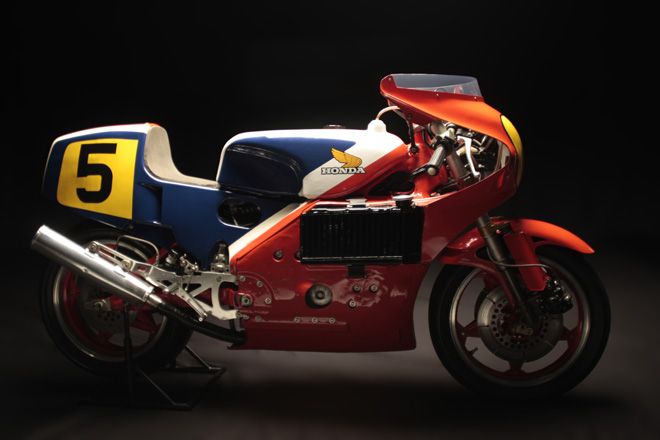
Of course at the time 500 Grand Prix was dominated by two-strokes, and that trend continued despite Honda’s best efforts with that original NR500.
“When I look back at it, I’m not sure if we were experimenting with cutting-edge technologies or obsessed with foolish ideas,” recalled Toshimitsu Yoshimura, an engineer involved in the development of the first NR500’s oval piston engine.
“At least we were doing something that was beyond the realm of conventional thinking. I’m not just talking about us, who were designing the engine, but also those who were creating the body.
“The emphasis was to create a difference-not just any difference but the difference that would work to our definite advantage. That’s why we decided that Honda should go with four-stroke engines. We wanted to achieve our target through innovative technology, and in so doing have the edge over our competition.”
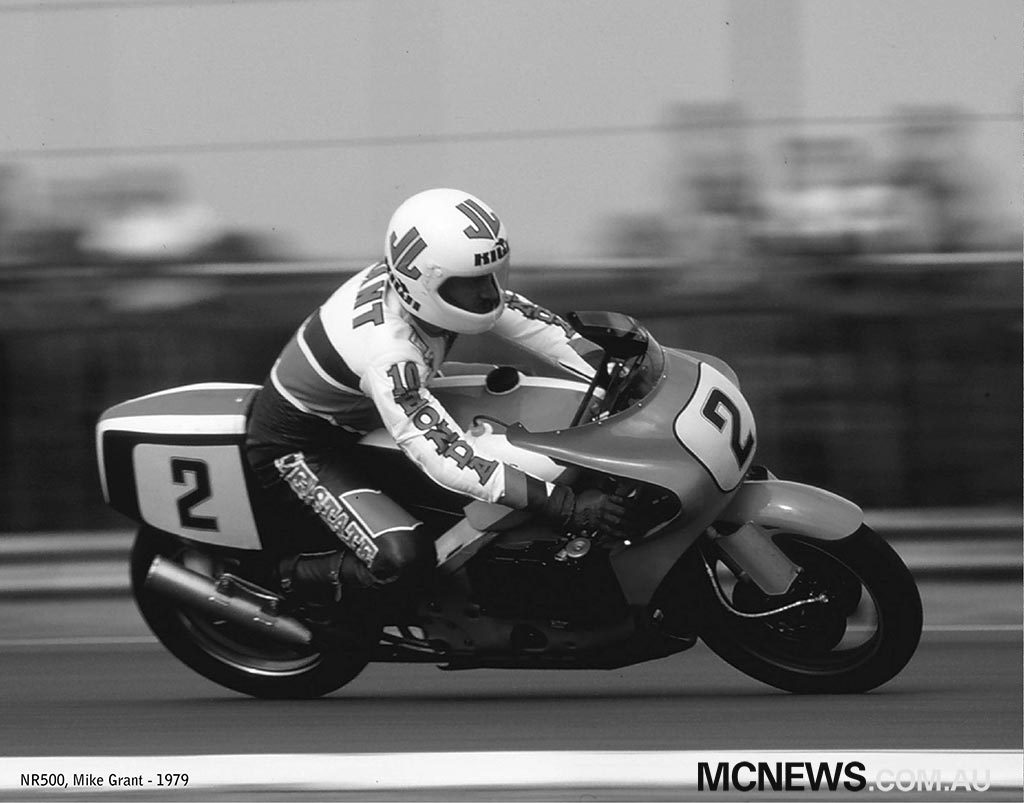
“We didn’t think much about whether the engine would actually turn over,” Yoshimura recalled, “or even whether it would be practical at all. We weren’t worried about those things, since we just wanted to make it work.”

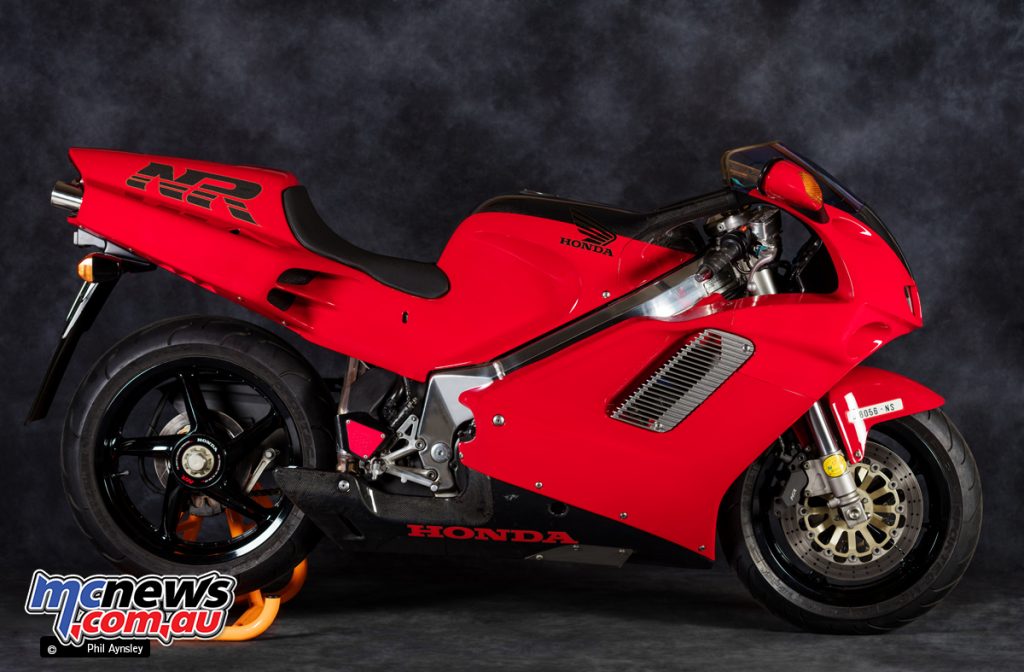
The original idea was to achieve the breathing advantages and characterists of a V-8, within racing rules that stipulated a maximum of four cylinders.
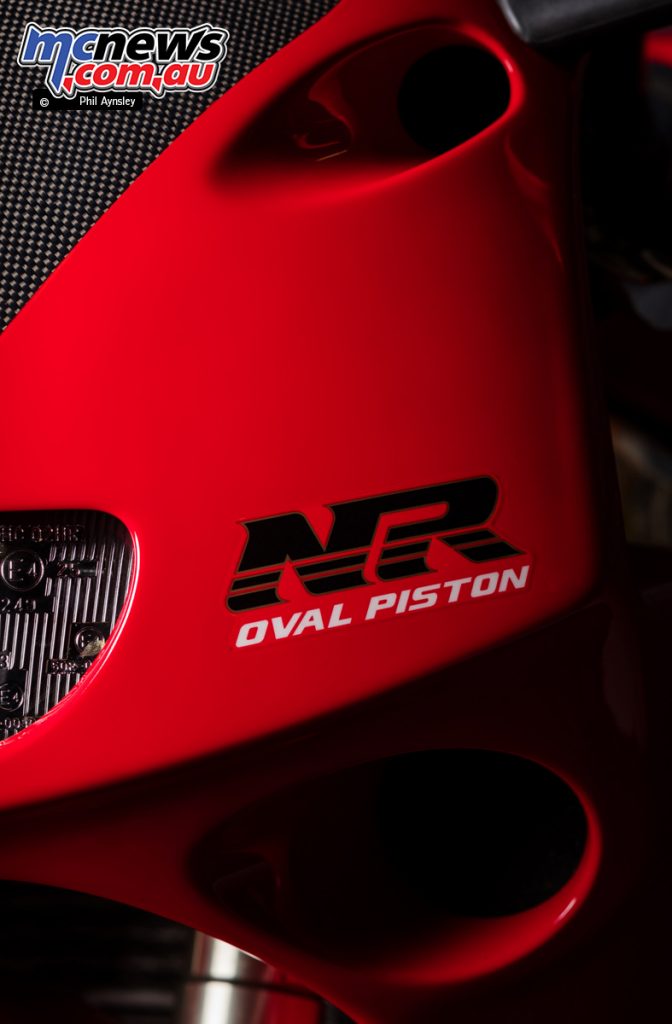
The NR750 endurance racer that was entered in the 1987 LeMans 24 Hour and other selected events.
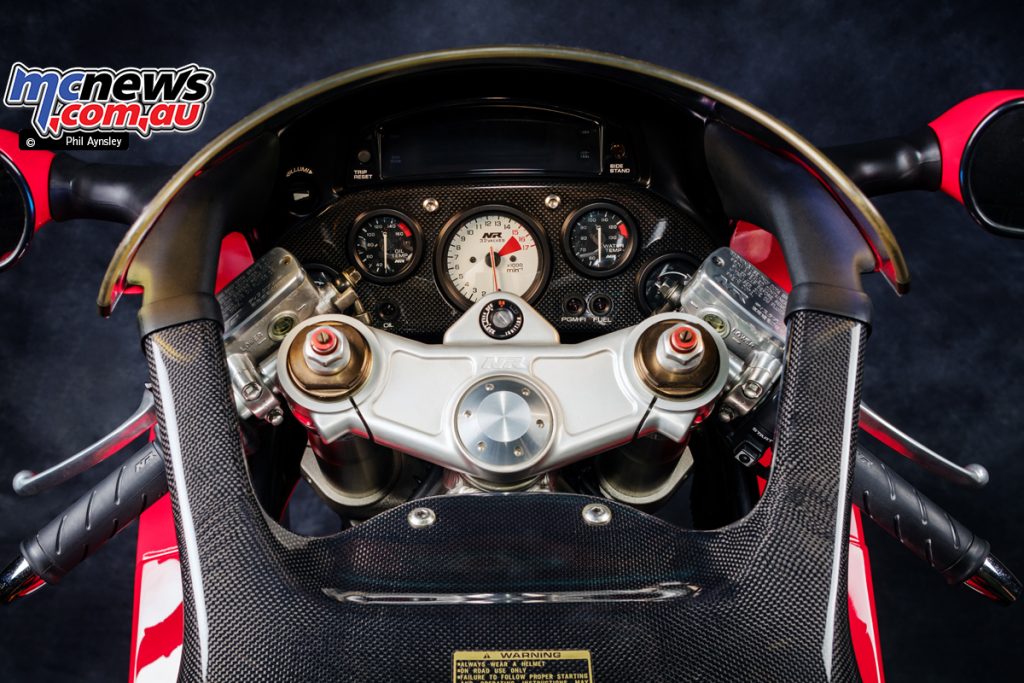
In fact Tasmania’s Malcom Campbell (who had ridden the bike at LeMans), took the NR750’s only major victory in the first leg of the Calder round of the ’87 Swann Series.
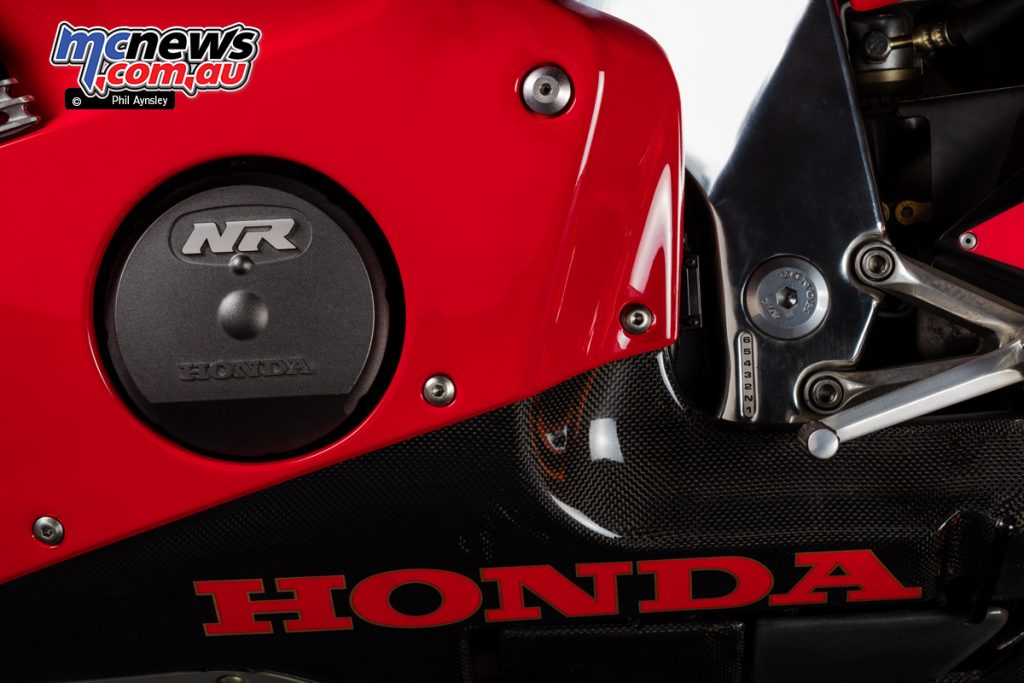
In 1992 Honda released the NR limited production road bike, of which only 300 were made. It cost £36,500 in the UK – five times the cost of the freshly minted CBR900RR Fireblade released in the same year.
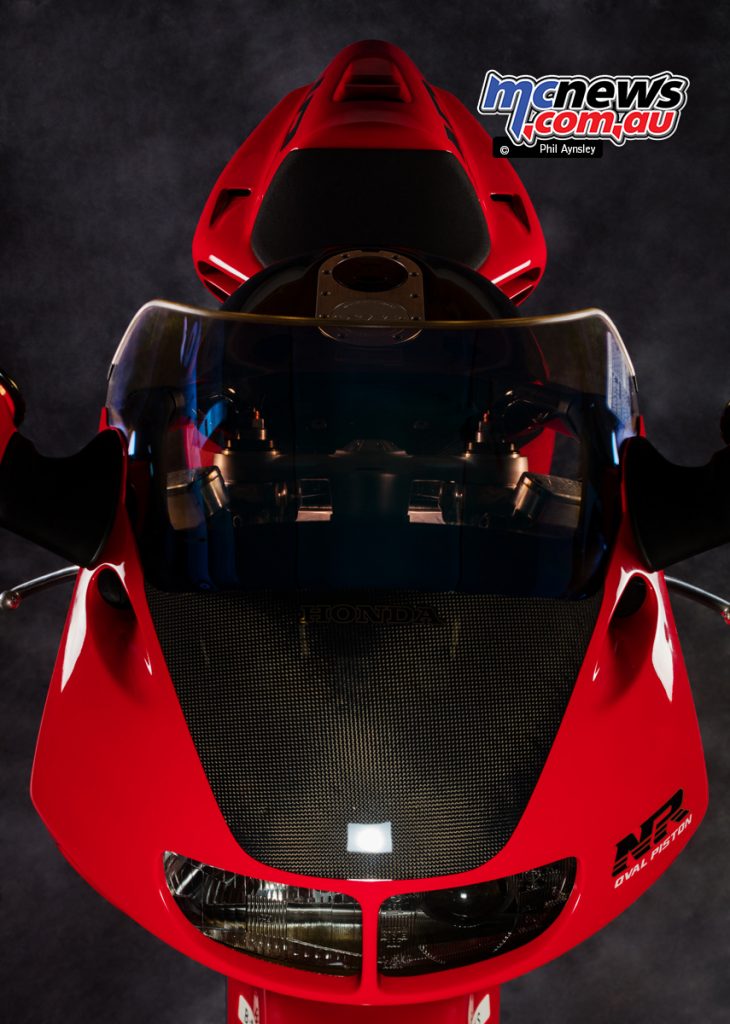
Apart from the 750cc V-4 oval-pistoned, eight-valves, two conrods per cylinder motor other notable features for the time were the inverted front fork, magnesium wheels, twin spar alloy frame and underseat exhaust.
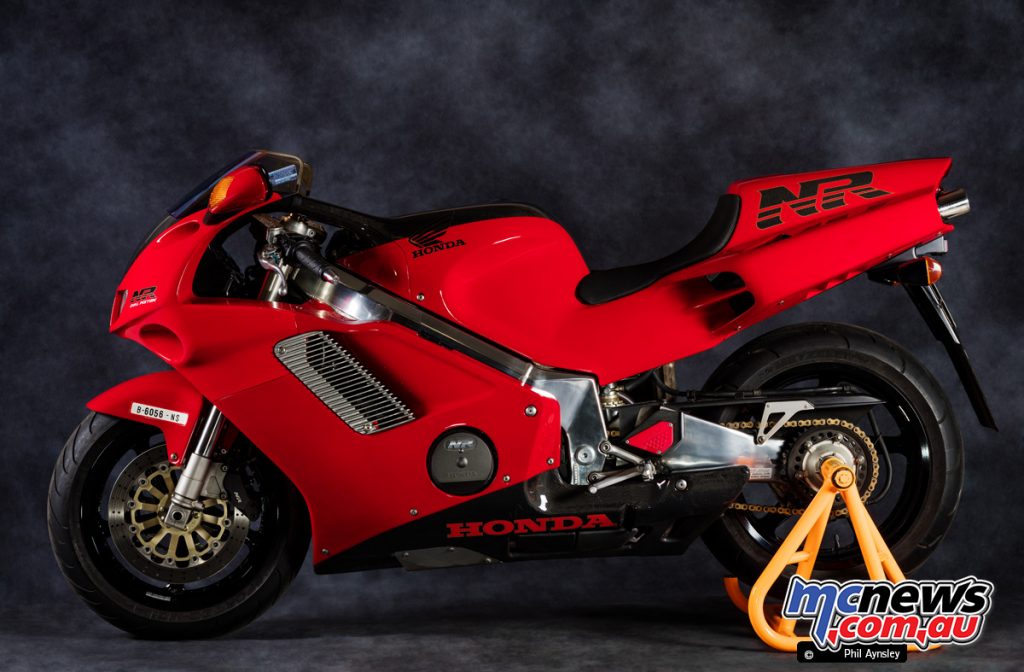
Another interesting touch was the use of a mirror in the dash to show the LCD display at “infinity” so the rider didn’t have to refocus when checking the instruments.
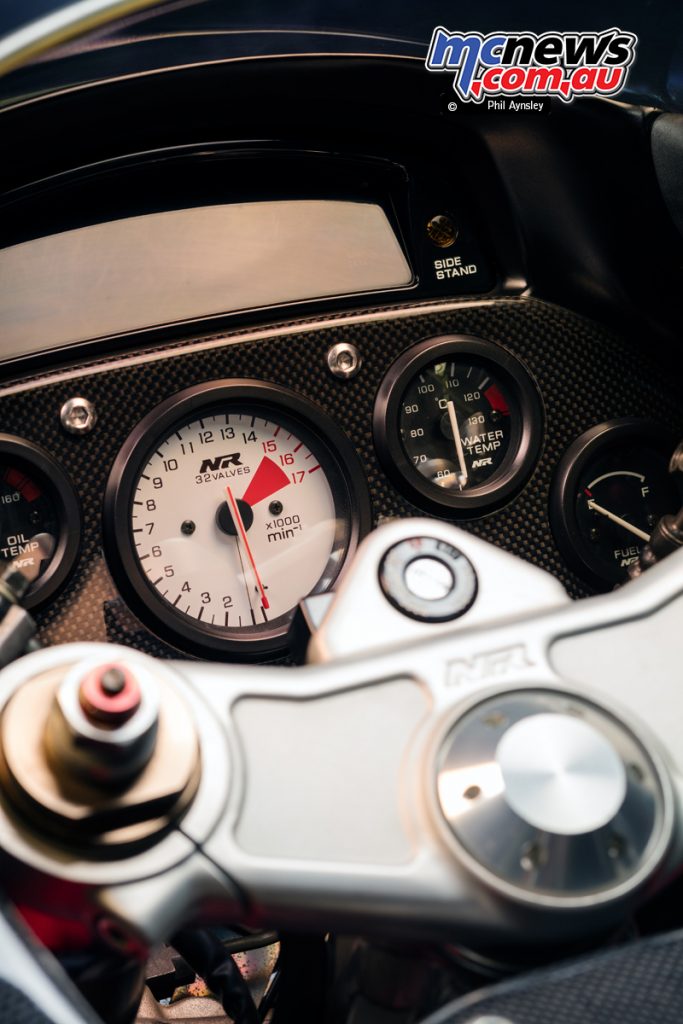
Power was 125 hp at 14,000 rpm, with a dry weight of 223 kg, and top speed of 257 km/h.

This bike was bought new from Honda Spain by its current owner who has put some 3,000 kilometres on it. It is still registered and ridden.
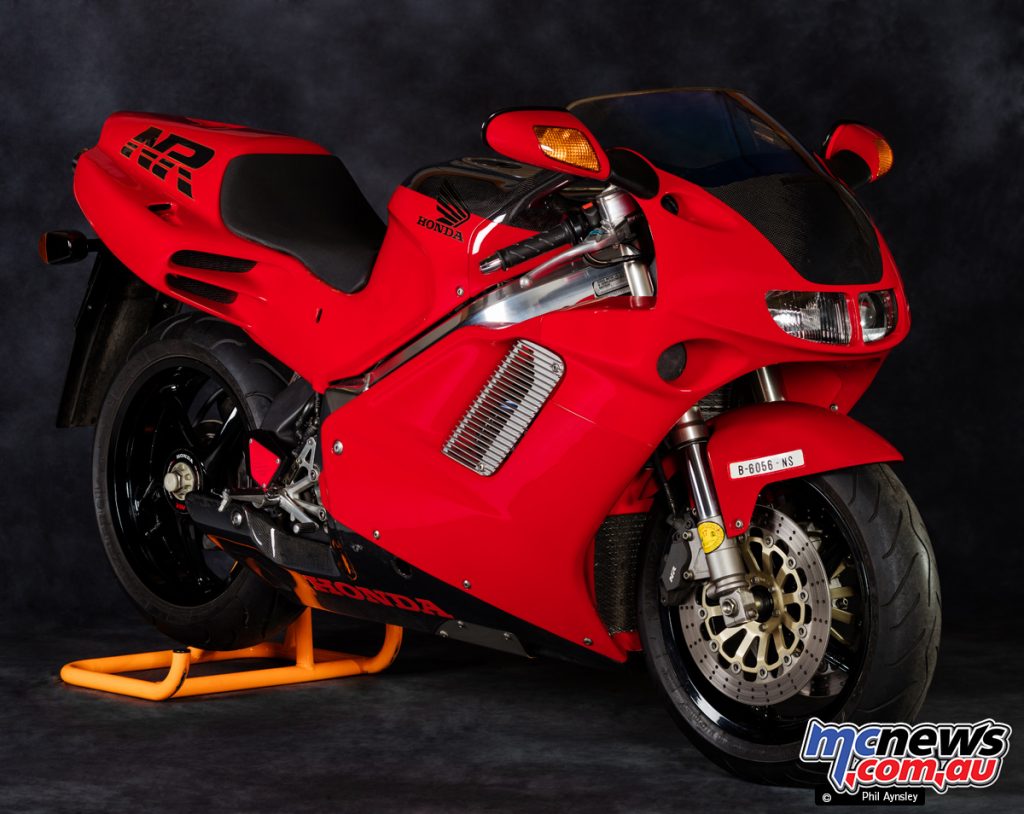
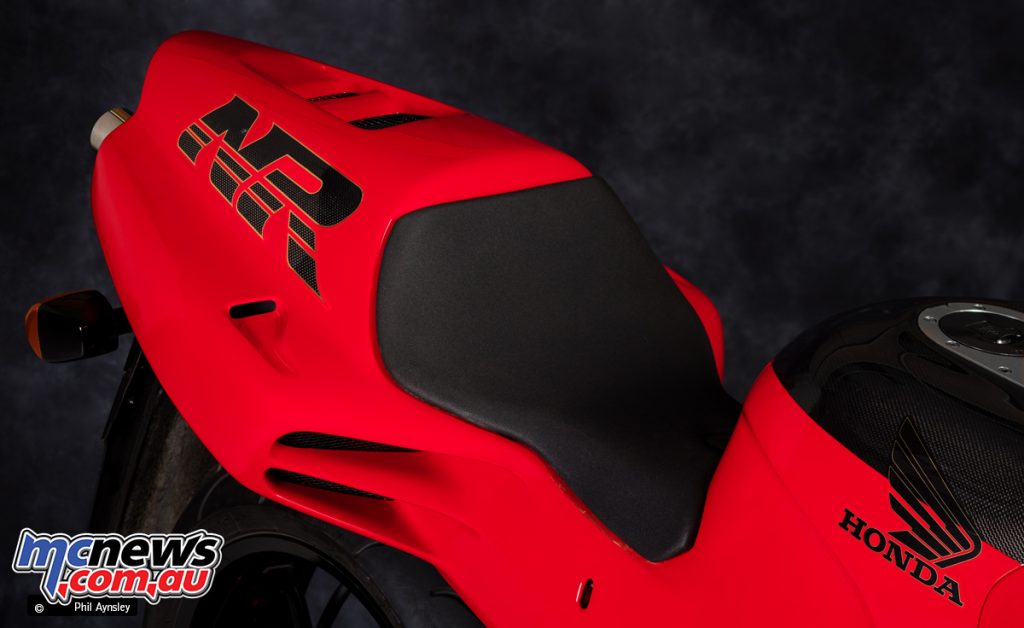
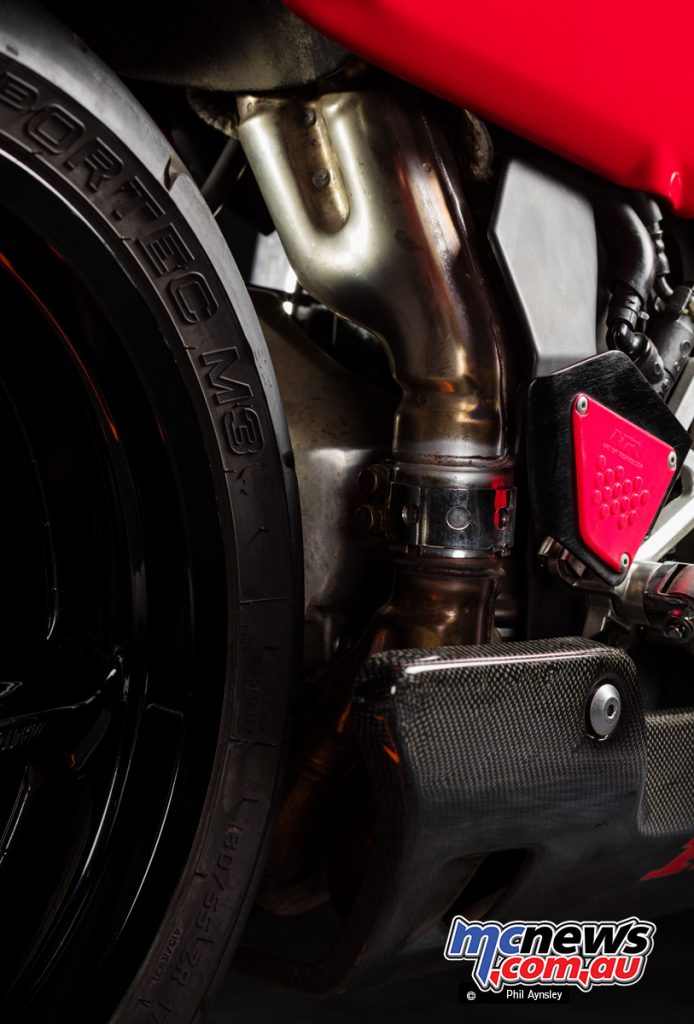
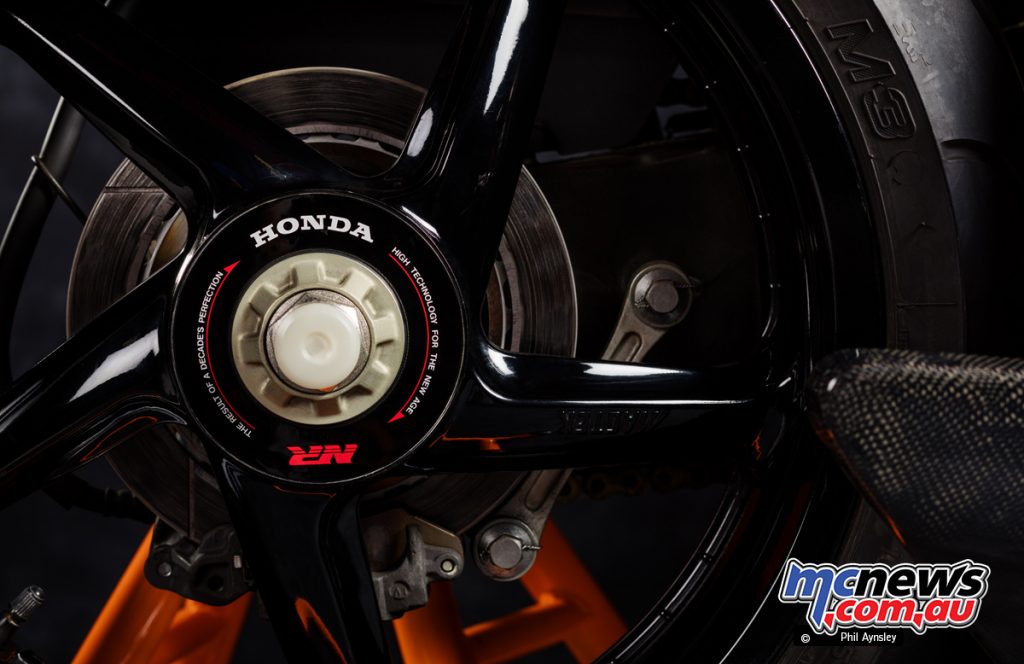
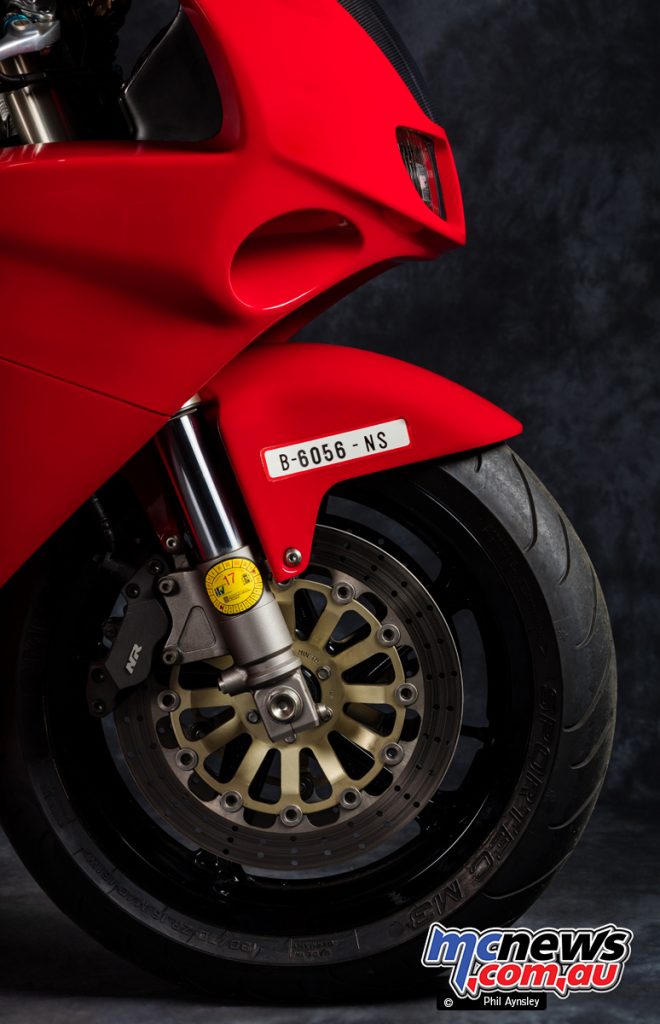
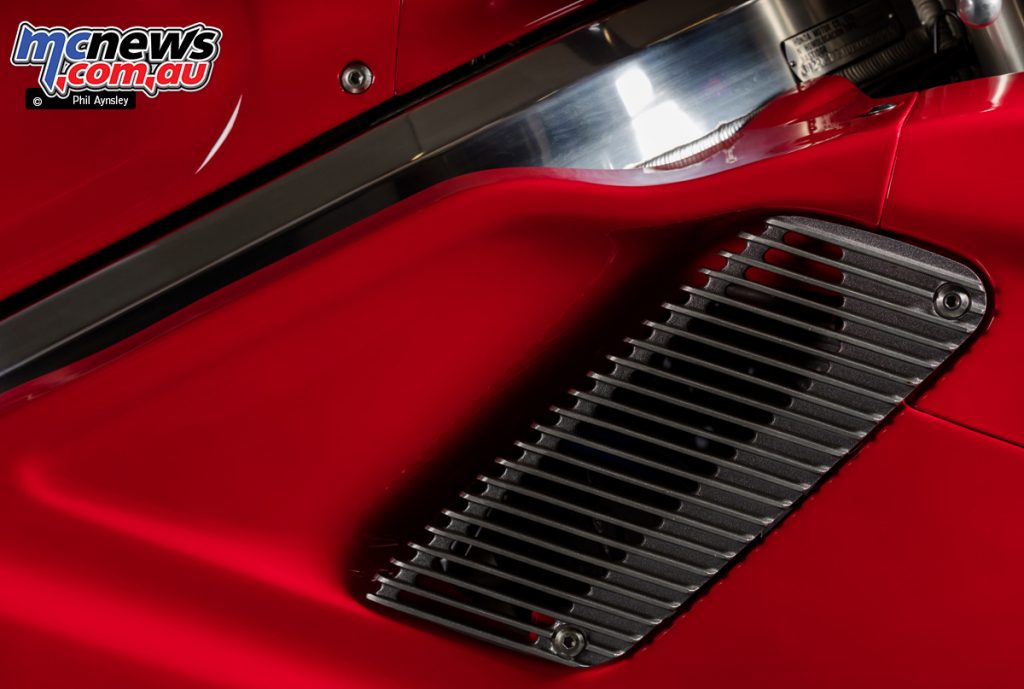
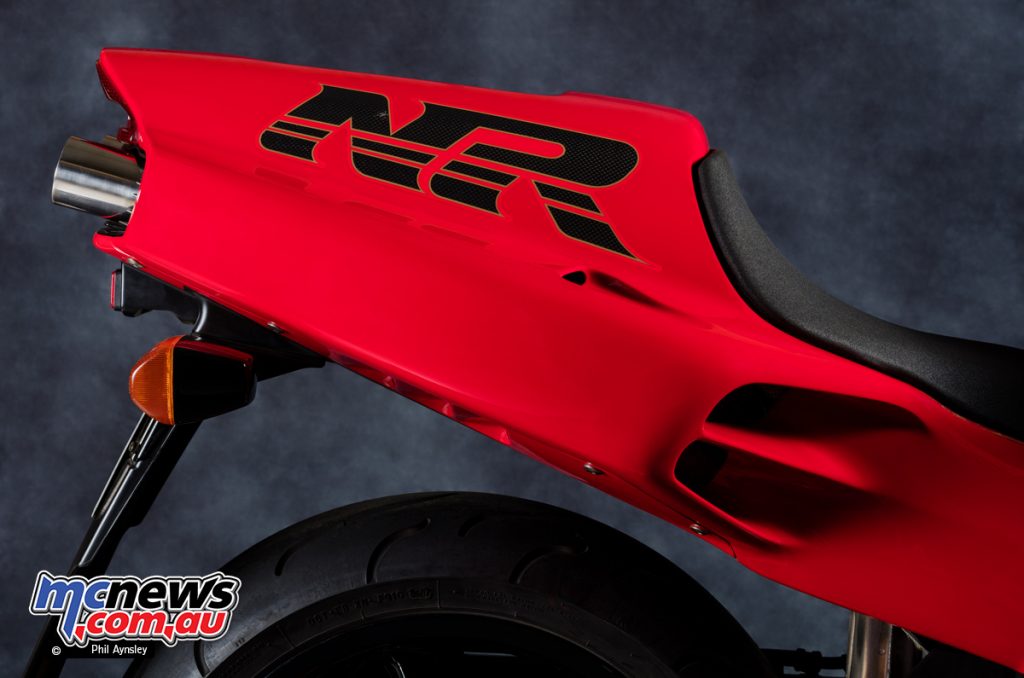
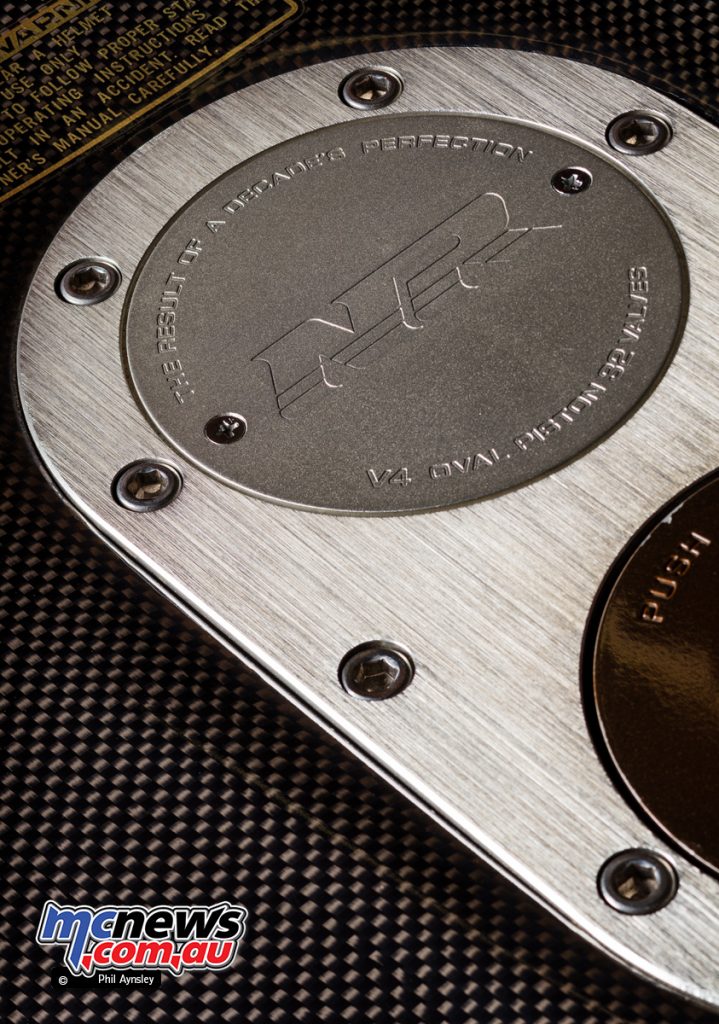
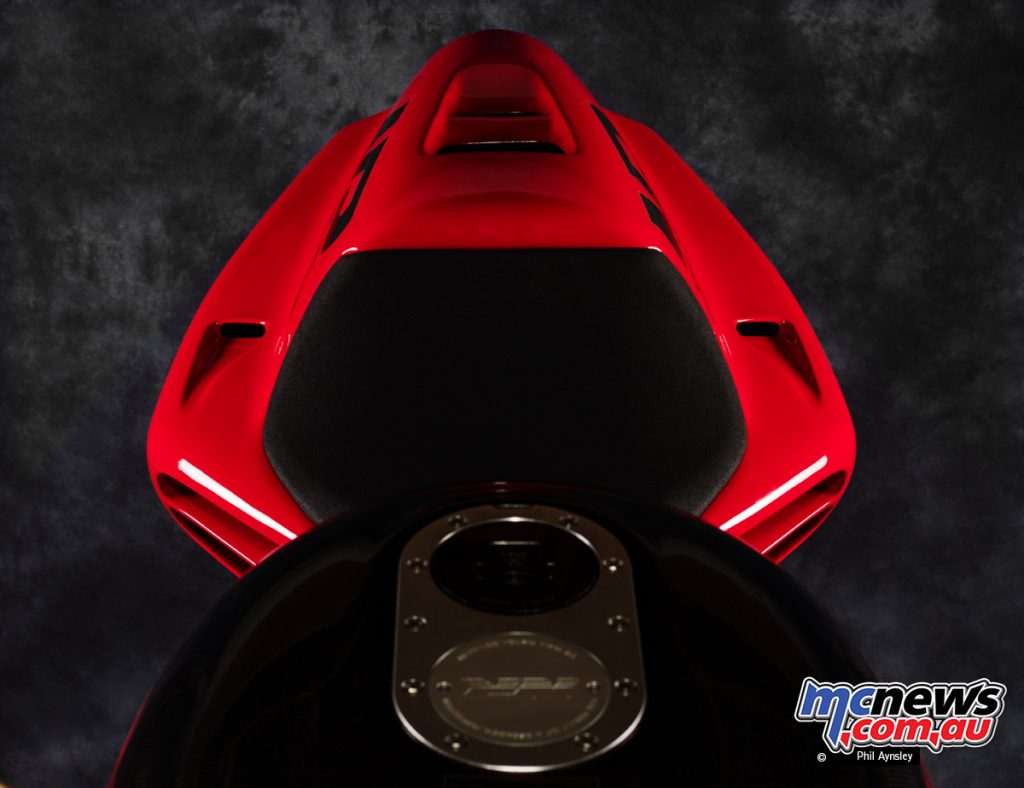
Some MCNews.com.au archive photos below that feature the oval piston engine

